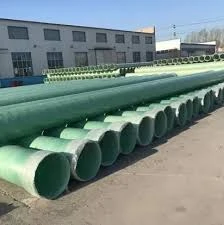
-
 Afrikaans
Afrikaans -
 Albanian
Albanian -
 Amharic
Amharic -
 Arabic
Arabic -
 Armenian
Armenian -
 Azerbaijani
Azerbaijani -
 Basque
Basque -
 Belarusian
Belarusian -
 Bengali
Bengali -
 Bosnian
Bosnian -
 Bulgarian
Bulgarian -
 Catalan
Catalan -
 Cebuano
Cebuano -
 China
China -
 China (Taiwan)
China (Taiwan) -
 Corsican
Corsican -
 Croatian
Croatian -
 Czech
Czech -
 Danish
Danish -
 Dutch
Dutch -
 English
English -
 Esperanto
Esperanto -
 Estonian
Estonian -
 Finnish
Finnish -
 French
French -
 Frisian
Frisian -
 Galician
Galician -
 Georgian
Georgian -
 German
German -
 Greek
Greek -
 Gujarati
Gujarati -
 Haitian Creole
Haitian Creole -
 hausa
hausa -
 hawaiian
hawaiian -
 Hebrew
Hebrew -
 Hindi
Hindi -
 Miao
Miao -
 Hungarian
Hungarian -
 Icelandic
Icelandic -
 igbo
igbo -
 Indonesian
Indonesian -
 irish
irish -
 Italian
Italian -
 Japanese
Japanese -
 Javanese
Javanese -
 Kannada
Kannada -
 kazakh
kazakh -
 Khmer
Khmer -
 Rwandese
Rwandese -
 Korean
Korean -
 Kurdish
Kurdish -
 Kyrgyz
Kyrgyz -
 Lao
Lao -
 Latin
Latin -
 Latvian
Latvian -
 Lithuanian
Lithuanian -
 Luxembourgish
Luxembourgish -
 Macedonian
Macedonian -
 Malgashi
Malgashi -
 Malay
Malay -
 Malayalam
Malayalam -
 Maltese
Maltese -
 Maori
Maori -
 Marathi
Marathi -
 Mongolian
Mongolian -
 Myanmar
Myanmar -
 Nepali
Nepali -
 Norwegian
Norwegian -
 Norwegian
Norwegian -
 Occitan
Occitan -
 Pashto
Pashto -
 Persian
Persian -
 Polish
Polish -
 Portuguese
Portuguese -
 Punjabi
Punjabi -
 Romanian
Romanian -
 Russian
Russian -
 Samoan
Samoan -
 Scottish Gaelic
Scottish Gaelic -
 Serbian
Serbian -
 Sesotho
Sesotho -
 Shona
Shona -
 Sindhi
Sindhi -
 Sinhala
Sinhala -
 Slovak
Slovak -
 Slovenian
Slovenian -
 Somali
Somali -
 Spanish
Spanish -
 Sundanese
Sundanese -
 Swahili
Swahili -
 Swedish
Swedish -
 Tagalog
Tagalog -
 Tajik
Tajik -
 Tamil
Tamil -
 Tatar
Tatar -
 Telugu
Telugu -
 Thai
Thai -
 Turkish
Turkish -
 Turkmen
Turkmen -
 Ukrainian
Ukrainian -
 Urdu
Urdu -
 Uighur
Uighur -
 Uzbek
Uzbek -
 Vietnamese
Vietnamese -
 Welsh
Welsh -
 Bantu
Bantu -
 Yiddish
Yiddish -
 Yoruba
Yoruba -
 Zulu
Zulu
frp clarifier system
Understanding the FRP Clarifier System
The FRP (Fiberglass Reinforced Plastic) clarifier system is an advanced and efficient solution for water treatment processes, specifically designed for the separation of solids from liquids. This technology is making significant strides in industries such as municipal wastewater treatment, industrial process water treatment, and even in some agricultural applications. Its innovative design offers several advantages over traditional clarifiers, making it an essential component of modern water management systems.
Understanding the FRP Clarifier System
The FRP clarifier works on the principle of gravity separation, where heavier solids settle to the bottom of the tank, forming a sludge layer, while lighter components, such as fats and oils, float to the surface. The design typically includes a series of baffles or plates that promote effective sedimentation, allowing for a clearer effluent to be discharged while capturing and removing settled solids efficiently.
frp clarifier system

Another noteworthy feature of FRP clarifiers is their customizable design. They can be manufactured in various shapes and sizes to fit specific space constraints and flow requirements. This flexibility ensures that facilities can optimize their water treatment processes without the need for extensive modifications to existing infrastructure. Moreover, with the increasing focus on sustainability, FRP clarifiers can be designed to align with eco-friendly practices, including energy-efficient operations and the use of recycled materials.
In addition to their physical advantages, FRP clarifiers can significantly improve the efficiency of water treatment operations. By promoting the effective settlement of solids and minimizing the potential for resuspension, these systems help to enhance the overall quality of the treated water. This is particularly important in meeting regulatory compliance standards and ensuring the safety of water released back into the environment or reused in industrial processes.
Maintenance of FRP clarifier systems is also simpler compared to traditional clarifiers. The smooth surfaces of FRP materials reduce the accumulation of biofilms and other fouling agents, making cleaning tasks less frequent and less labor-intensive. Routine inspections and minor repairs can be conducted easily, ensuring that the system operates at peak performance.
In conclusion, the FRP clarifier system represents a significant advancement in water treatment technology. Its unique combination of durability, efficiency, and flexibility makes it an ideal choice for various applications. As industries continue to seek sustainable and effective solutions for water management, FRP clarifiers are poised to play a vital role in promoting cleaner water sources and improving environmental stewardship.









